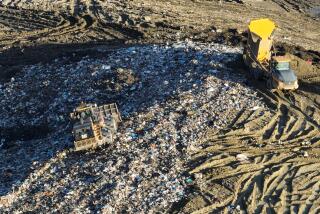A Super Lesson on Superfund Cleanup : Recently Completed Westminster Project Is Model Example of Expeditious Effort
In the annals of the Superfund, Westminster may stand out as a rare victory.
Last week Clare and Bobby Ross moved back into their house on Sowell Avenue. They were pioneers in the Environmental Protection Agency’s experimental program to relocate families from sites needing cleanup of toxic waste, remove the dangerous chemicals, and move the families back in--before too many years elapsed.
The Rosses, who lived in a rented house for nearly 11 months, were the first of 30 families to return to their homes. The EPA said about a dozen more will return this month and all should be back home by the end of this year.
That represents remarkable speed for a Superfund project. In the first dozen years after President Jimmy Carter signed the law setting up the Superfund, only 149 of 1,208 contaminated sites were cleaned up and removed from the cleanup list. Most were bogged down in court battles over who caused the pollution and who would pay.
In one sense, Westminster was easier than many. The EPA said the trucking company owner it blamed for dumping petroleum products on the site in the 1930s had gone out of business. And the agency could not find the developer who it said moved the hazardous material into long trenches buried 18 feet beneath the back yards of dozens of houses he was building 40 years ago.
Because the toxic wastes were in the middle of a residential area, the EPA rightly moved quickly after putting the site on the Superfund list three years ago. It spent about $20 million to relocate the Rosses and other families, pay their temporary rents and hire a company to dig up and remove the toxic waste.
Residents have praised the cleanup and their treatment by the EPA. The agency should apply the lessons it learned in Westminster to help residents elsewhere get quicker relief from toxic waste sites.
More to Read
Sign up for Essential California
The most important California stories and recommendations in your inbox every morning.
You may occasionally receive promotional content from the Los Angeles Times.










